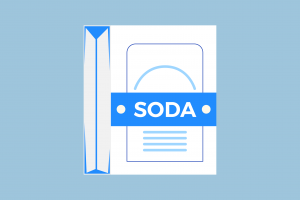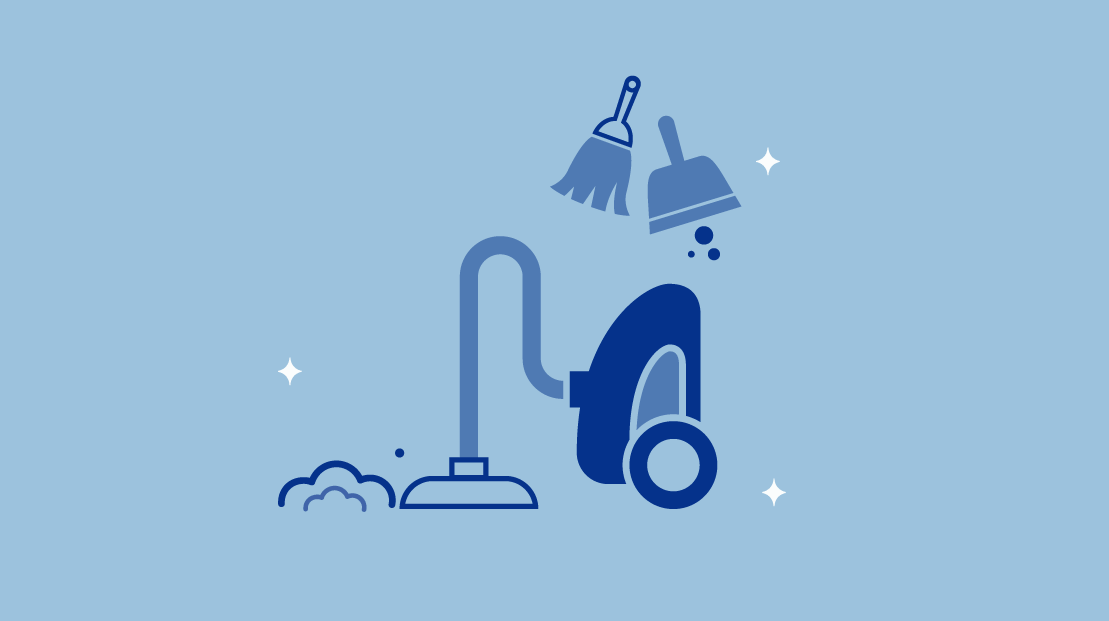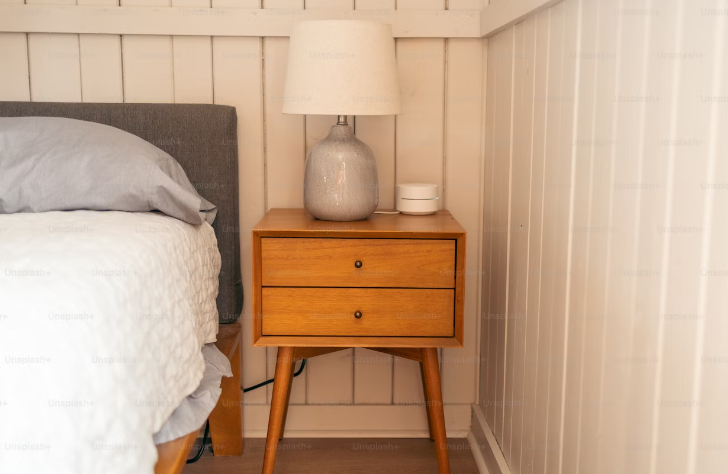A clean weighted blanket not only ensures the longevity of the product but also provides a fresh and comfortable sleep experience. In this article, we’ll explore the best methods to clean your weighted blanket without compromising its structure or functionality. From air drying to hand washing, we’ve got you covered.
So, let’s dive into the details and learn how to maintain the quality of your weighted blanket while keeping it clean and fresh.
Why Not Wash a Weighted Blanket?
If you own a weighted blanket that cannot be machine washed, you may be wondering if there’s a convenient way to keep it clean. Unfortunately, washing a weighted blanket in a washing machine is not recommended for these specialized bedding items.
Washing a weighted blanket in a washing machine poses many risks, especially when considering the water temperature, weighted blanket fillers, and the blanket’s weight.
Apart from the potential damage to the washing machine and the imbalanced distribution of weight within the blanket, there are other crucial factors to consider. Primarily there is the substantial weight of the blanket can exert excessive strain on the seams, increasing the risk of tears and leakage of the beads inside.
To maintain your weighted blanket’s quality and functionality, it’s crucial to avoid machine washing. Instead, be sure to consult the care label and check out our other sections for alternative cleaning methods.
Washing a Weighted Blanket Without a Washing Machine
Washing weighted blankets without a washing machine is a common dilemma for many individuals who own one, and it is one of the drawbacks that counterbalances the benefits of a weighted blanket. Fortunately, there are alternative methods to keep your blanket clean and fresh.
Hand Washing
Hand washing is the most straightforward method for cleaning many weighted blankets, especially when the blanket’s cover needs special care. To hand wash your weighted blanket, start by filling a bathtub or a large sink with lukewarm water. Add a gentle detergent and mix the water to create suds.
Next, fully submerge your blanket into the soapy water. Use your hands to gently scrub any stains or spots. It’s essential to apply enough pressure to remove dirt and debris but be cautious not to scrub too vigorously to avoid damaging the blanket’s structure.
After cleaning, rinse the blanket with clean water several times until the water runs clear. Be sure to thoroughly remove all soap residues for a fresh and clean result.
Spot Cleaning
If you’re dealing with a few small stains on your weighted blanket, it’s more practical to opt for spot cleaning. Begin by mixing equal parts warm water and vinegar in a spray bottle. To make sure this solution won’t cause any color fading or damage, test it on a small, inconspicuous area of the blanket.
Once you’ve confirmed it’s safe, spray the solution directly onto the stained area and gently dab it with a clean cloth. Repeat this process until the stain vanishes, and then let the area dry completely. If the stain persists, you can also consider using a mild stain remover, but be sure to check the care tag for any specific recommendations, particularly regarding the inner filling of your weighted blanket.
Drying
After cleaning your weighted blanket, it’s important to dry it properly to prevent any damage or mold growth. The best way to dry your blanket is by air drying it completely. Lay it flat on a clean surface or hang it outside on a clothesline. Avoid any direct sunlight exposure to prevent discoloration.
If you’re in a hurry and need to speed up the drying process, you can use a hairdryer in a low or medium setting. Hold the hairdryer several inches away from the blanket, moving it back and forth until it’s completely dry.
Now that you know how to wash a weighted blanket without a washing machine, you can keep it clean and fresh for longer. Regular cleaning will ensure its longevity while protecting its quality and functionality.
Can I Tumble Dry My Weighted Blanket?
One common question people ask when it comes to cleaning their weighted blanket is whether they can use a dryer to speed up the drying process. The answer, unfortunately, is no. Tumble drying a weighted blanket is not recommended.
Why not?
Well, the reason is that the weight inside the blanket can damage the machine, and the heat can damage the blanket itself. The stuffing inside the blanket can clump up and affect the overall weight distribution, making it less effective at providing the deep pressure stimulation that it’s meant to offer.
Additionally, the synthetic or natural materials used to make the blanket can shrink or melt in high heat, affecting the overall structure and quality. This could lead to the blanket becoming less comfortable or even unusable.
How to Air Dry a Weighted Blanket
Once you have washed your weighted blanket, it is important to air dry it to prevent damage and maintain its original shape. Here are some steps to help you air dry your blanket effectively:
Step 1: Find a Suitable Space
For air-drying your organic material, whether it’s a throw or lap blanket, the initial step is to find an appropriate space. Opt for a flat surface that is not only dry and clean but also spacious enough to comfortably accommodate the blanket’s size. Ensure that the chosen area is well-ventilated, allowing for maximum air circulation during the drying process.
Step 2: Lay the Blanket Flat
Once you’ve found the appropriate space, take care to lay your weighted blanket properly and flat on the surface. Ensure that it is spread evenly across the area to allow for uniform air flow during the air-drying process. It’s crucial to avoid hanging the blanket, as this could potentially lead to stretching or deformation, especially when you need to air-dry organic material.
Step 3: Flip the Blanket Over
The air-drying process of your weighted blanket depends on several factors. After a few hours, when the top of the blanket is dry, make sure to flip it over to air-dry the underside. Repeat this process as necessary until the entire blanket is completely dry, considering the type of fill material, such as plastic pellets or organic materials, and whether you’re using a duvet cover.
It’s essential to avoid using a fan or heater during this process, as the additional heat and airflow could potentially damage the blanket’s filling and its outer cover.
Step 4: Give It a Finishing Touch
Once the blanket is fully dry, give it a gentle shake to fluff up the filling and restore its shape. If necessary, you can also iron the removable cover on a low setting to smooth out any wrinkles. Avoid using high heat to prevent damage to the fabric.
By following these simple steps, you can ensure your weighted blanket is effectively air-dried and retains its quality for years to come.
Drying Methods That Work Best
The best way to dry your weighted blanket is to air dry it. Spread it out on a flat surface, preferably outdoors in the sun, or in a well-ventilated area indoors. Make sure it’s spread out evenly to maintain its shape and weight distribution.
If you need to dry your blanket quickly, you could use a fan to improve air circulation around it. This will help the moisture evaporate faster, but make sure it’s not too close to the blanket as the direct airflow could affect the weight distribution.
Pro-tip: For those who live in colder climates or don’t have enough space to air dry their weighted blanket, using a hairdryer on a cooler setting can also help speed up the process.
If in doubt, always refer to the manufacturer’s care instructions for specific guidelines on how to clean and dry your weighted blanket. Remember, proper care and maintenance will ensure that your weighted blanket lasts for years to come.
Removing Odors from a Weighted Blanket
Weighted blankets are great for providing comfort and relaxation, but over time they can start to develop unpleasant odors. Whether it’s from sweat, spills, or just general use, getting the smell out of a weighted blanket can be a challenge. Here are some effective techniques you can use:
Use Baking Soda
 Baking soda, a natural deodorizer, works wonders in eliminating odors from your weighted blanket. You can use it to freshen up your mattress and pillows, too!
Baking soda, a natural deodorizer, works wonders in eliminating odors from your weighted blanket. You can use it to freshen up your mattress and pillows, too!
To effectively use it for your weighted blanket, evenly distribute a generous amount of baking soda on the blanket’s surface and let it sit for several hours.
After the waiting period is over, use a vacuum cleaner to remove both the baking soda and any accumulated dust or dirt. If there’s any remaining residue, a soft-bristled brush can be employed to gently remove the excess, leaving your blanket refreshed and odor-free.
Try Vinegar
 Vinegar is another natural ingredient that can work wonders in eliminating odors from your weighted blanket, especially if your pet sleeps with you. To harness its deodorizing power, fill a spray bottle with equal parts water and white vinegar, and then lightly spray the blanket. Allow the vinegar solution to sit for about 15 minutes, ensuring it penetrates any pet-related odors.
Vinegar is another natural ingredient that can work wonders in eliminating odors from your weighted blanket, especially if your pet sleeps with you. To harness its deodorizing power, fill a spray bottle with equal parts water and white vinegar, and then lightly spray the blanket. Allow the vinegar solution to sit for about 15 minutes, ensuring it penetrates any pet-related odors.
Following this, wash the blanket according to the manufacturer’s instructions for a thorough cleanse. Additionally, to maintain a fresh blanket, use a lint roller once a week to keep it free of any pet hair or debris.
Avoid Using Scented Detergents
While scented detergents may seem like a good idea for masking unpleasant odors, they can actually make the problem worse. The perfumes and fragrances in these detergents can cling to the fibers of your blanket and cause a build-up of odors over time. Similarly, you don’t want to just douse the blanket in essential oils for sleep.
Instead, stick to bleach-free laundry detergent or a gentle laundry detergent and avoid using fabric softeners.
Hang Your Blanket Outside
One of the easiest ways to get rid of odors from a weighted blanket is to hang it outside in the fresh air and sunshine. The UV rays and circulating air can help kill any bacteria from the bed that may be causing the unpleasant smell. Just be sure to check the manufacturer’s instructions to ensure your blanket is safe to dry outside.
Can I Dry Clean a Weighted Blanket?
Dry cleaning might appear to be a convenient choice for cleaning your weighted blanket. However, it’s not always the best option, considering the potential impact on your blanket’s delicate materials. The chemicals used in dry cleaning can be harsh and may cause damage over time, especially for blankets with certain fillers.
For instance, if your weighted blanket contains glass, plastic, or steel beads, or if it’s a chunky knit design, it may indeed be machine washable that require the use of cold or warm water. However, if the fillers in the blanket are rice, beans, or grains, then dry cleaning is the most suitable choice for maintaining the quality and longevity of your blanket.
Alternative Cleaning Methods
If you’re hesitant to wash your blanket by hand or in a machine, there are still ways to effectively clean it without resorting to dry cleaning. One option is to spot clean any stains or spills as they occur, using a gentle cleaning solution and a soft cloth. Another method is to use a handheld steamer to kill bacteria and freshen up your blanket.
More Cleaning Guides for Bedding
For mattresses:
- How to Get Stains Off and Clean a Mattress
- How to Clean Vomit from a Mattress
- How to Remove Urine Stains and Smell From a Mattress
- How to Remove Blood Stains on Your Mattress
- How to Remove Makeup Stains from Mattresses
- How to Get Poop Stains out of a Mattress
- How to Remove Rust Stains on a Mattress
- How to Get Sweat Stains Out of a Mattress
- How to Clean Water Stains From a Mattress
- How to Dry a Wet Mattress After Water Damage
- How to Get Rid of Bed Bugs in a Mattress
- How to Spot Mold on Mattress
For pillows:
- How to Wash and Dry All of Your Pillows
- How to Wash a Body Pillow
- How to Disinfect Your Pillow
- How to Fluff a Pillow
For sheets:
- How Often Should You Wash Your Sheets?
- How to Make Sheets White with Household Items
- Can You Wash Sheets with Clothes and Other Items?
- How to Iron Sheets
- How to Get Blood Out of Sheets
- How to Make Sheets Softer
For blankets and other coverings:
- How to Clean a Comforter
- How Long Does It Take to Dry Clean a Comforter?
- How to Wash a Quilt
- How to Clean an Electric Blanket Safely
- How to Wash a Duvet
- How To Wash a Crochet Blanket
For other bedding items:
- How To Clean a Memory Foam Mattress Topper
- How to Clean an Upholstered Bed Frame
- How Often Should You Wash Your Mattress Protector?
FAQs
Why can’t you wash a weighted blanket?
Washing a weighted blanket can disrupt the distribution of the weighted materials, such as glass beads, and compromise the blanket’s effectiveness. In other words, the beads can shift or clump during washing. A blanket filled with plastic beads can also be affected by the heat of a wash cycle, ruining its feel.
It’s also possible for the weighted beads to compromise the integrity of your washing, particularly if they are metal beads. You may be able to machine a weighted blanket on the lighter end of their weight range, but heavier blankets should be spot-cleaned only.
How can I air-dry a weighted blanket?
To air dry a weighted blanket, lay it flat on a clean, dry surface in a well-ventilated area. Smooth out any wrinkles to preserve the blanket’s shape and ensure even drying. Allowing ample time for the blanket to air dry completely is crucial to prevent any potential moisture-related issues such as mold and mildew.
How do you get the smell out of a weighted blanket?
To eliminate any lingering odors from a weighted blanket, try spot cleaning with a mild detergent and water. Ensure the affected area is thoroughly dried and aired out in a well-ventilated space to help dissipate any remaining smells. You can also try sprinkling baking soda after to absorb any lingering moisture and odors.
How do you wash a weighted blanket without a washing machine?
Spot cleaning is the safest option for washing a weighted blanket without a washing machine. Use a damp cloth with a mild detergent to gently clean any stains. Be sure to avoid saturating the blanket. After spot cleaning, let the blanket dry in an airy space.
Can I tumble-dry my weighted blanket?
Tumble drying is not advised for weighted blankets as the heat and agitation can damage the delicate stitching and compromise the overall structure of the blanket. Plastic beads may also melt if run through a drying cycle. This is why its crucial to follow the manufacturer’s care instructions to prevent any potential damage and preserve the quality of the weighted blanket.
Can I dry-clean a weighted blanket?
No, as dry cleaning a weighted blanket can potentially damage the delicate fabric and weighted components used in its construction. The chemicals and heat can affect the integrity of the weighted blanket, leading to a loss of its therapeutic benefits and overall quality. Make sure you follow the manufacturer’s care instructions to maintain the blanket’s effectiveness and longevity.
Conclusion
Once you’ve picked out a weighted blanket with a safe weight, you want to do what you can to maintain its condition. Preserving the quality and comfort of your weighted blanket relies on gentle cleaning methods that avoid machine washing. From spot cleaning to natural deodorizing, these techniques will keep your blanket fresh and functional, ensuring many more nights of better sleep.
About the author
April Mayer is a sleep expert and writer with a degree in exercise physiology. She has dedicated her career to exploring the relationship between sleep and productivity. Her insightful articles, such as "The Surprising Way Your Mood Might Be Messing With Your Productivity" and "Wake Up to More Productive Mornings," have been featured in reputable publications like Forbes, Greatist, Real Homes, Thrillist, Tom's Guide, and Eat This, Not That. With a passion for helping others lead more productive lives through restful sleep, April offers valuable expertise on foods and vitamins for better sleep. As a trusted member of the Early Bird team since March 2020, she continues to provide informative and well-researched content.
View all posts





